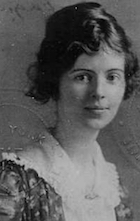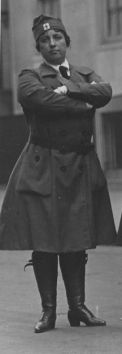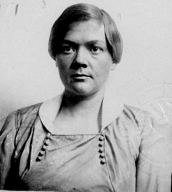The Over There Theatre League, headed by theater legend George M. Cohan and theater director-producer-playwright Winthrop Ames, formed in April 1918 to mobilize volunteer performers for entertaining US troops in France under the auspices of the YMCA. According to the 24 Apr 1918 New York Times, nearly 2,000 theater professionals attended the first meeting (but a 1 November 1918 issue of Variety signaled discord between the league and those rejected for performances in France).

Amparito Farrar. Library of Congress, Prints and Photographs Division.
According to the 3 May 1918 Variety, “No woman under 25 will be eligible as an entertainer overseas” (23). One female league participant was the 25-year-old Amparito Farrar, soprano (1893–1989, no relation to opera star Geraldine Farrar). Promoted from chorus girl to star of the 1914 production of High Jinks, Farrar sang for service members at the new base hospital at Fox Hills, Staten Island, before leaving the United States in Aug 1918 with her mother, who served as her accompanist, for four months in France. She said in the 15 Aug 1918 Musical Leader, “I want to bring them solace and comfort when they come back wounded or for first aid. I consider my work just as much first aid as the medical treatment…” (149).
As the 2 Oct. 1918 New Era noted, Farrar stated:
I have sung in motor camps, ‘Y’ and Knights of Columbus huts, Salvation Army bakeries, Red Cross hospitals and even at the bedsides of the boys, one at a time, everything from grand opera to ‘Tickle Toe’ [probably a song from the 1917 musical Going Up]. I even dance a little” (9).
She further reported in the 28 Nov. 1918 Musical Leader:
I have looked over the German line as far as the Rhine. . . . Last week I was in a very beautiful part of the country, singing every night, being forced to ride from fifteen to twenty miles every day to do so. . . . In the afternoon I went with one of the ‘Y’ men to see a track meet for a negro regiment arranged by white officers. After it was over they all gathered around a little bank of grass, over 3,300 of them, and I sang many songs to them amidst cheers and yells of delight. (“Amparito Farrar Writes from France” 521)
In June 1919, Farrar married surgeon Goodrich Truman Smith, who had treated her in France for influenza.
Listen to Farrar sing the World War I song “Madelon.”








